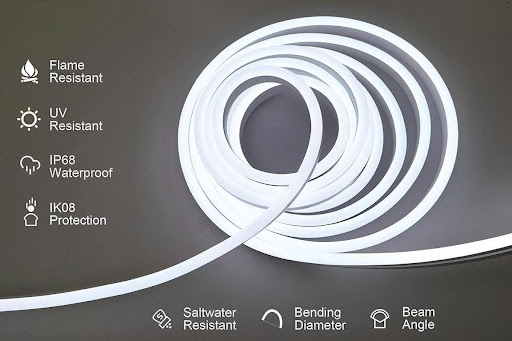Truly eco-friendly wallpaper is made from natural or sustainably sourced materials, avoids harmful chemicals, and ideally has some sort of reputable certification backing it up. Keeping the following points in mind will help ensure you make a choice that’s both beautiful and respectful to our beloved planet.
What’s the deal with vinyl?
Vinyl wallpapers are popular because they’re durable and easy to clean. But they have a not-so-green side. Vinyl is made from polyvinyl chloride (PVC), which can release volatile organic compounds (VOCs) and other potentially harmful chemicals during production and throughout its lifecycle. These VOCs contribute to indoor air pollution, which is why vinyl isn’t considered the healthiest choice, especially if you’re concerned about air quality and your environmental footprint, notes Foothills Properties Management experts.
Eco-friendly Alternatives
So, what constitutes eco-friendly wallpaper? There are several options that are not only stylish but also kind to the planet.
Paper-Based Wallpapers
These are made from renewable resources like recycled paper or sustainably sourced virgin wood pulp. They come in a myriad of colors and designs without the use of PVC.
When checking quality, consider these factors:
- Paper Source—Look for wallpapers made from recycled paper or those bearing certifications like FSC, which ensure the paper is sourced from sustainably managed forests.
*Sustainably Managed Forests: This concept involves managing forests in ways that maintain their biodiversity, productivity, and ecological processes. Trees are harvested at a pace that allows the forest to regenerate. Certification bodies like the Forest Stewardship Council (FSC) ensure that wood and paper products come from responsibly managed forests. It’s about balancing economic needs with ecological preservation, ensuring future generations can also benefit from forest resources.
- Inks and Dyes—Eco-friendly options often use water-based or vegetable-based inks that are less polluting than solvent-based varieties. Low-VOC (Volatile Organic Compounds) labels are a positive sign.
- Adhesives—Go for products that use water-based adhesives free from heavy chemicals. This not only makes installation healthier but also greener.
In terms of durability and ease of installation, higher-end paper wallpapers often come pre-pasted for ease. The weight of the paper can also contribute to durability; heavier papers tend to withstand wear and tear better.
Grasscloth
This elegant option is made from natural fibers such as jute, hemp, seagrass, and arrowroot. Grasscloth remains a luxurious, earth-kind choice, albeit with its own set of installation challenges. It’s biodegradable and adds a lovely texture, perfect for creating a cozy, earth-friendly vibe. Here’s what sets them apart:
- Production Ease—Grasscloth wallpapers are generally more labor-intensive to produce because they’re handwoven. This complexity adds a touch of artisanal elegance to each roll but can also drive up the cost.
This craftsmanship contributes to their unique, textured appearance. The manual labor involved can definitely elevate the price, but it also means each roll carries a one-of-a-kind, artisanal touch. Grasscloth is essentially luxury in natural form, appealing for its earthy elegance as much as its environmental credentials.
- Installation Challenges—Installing grasscloth can be tricky compared to standard paper wallpapers. Their natural texture requires some careful handling. And, they typically need special paste or adhesive that’s compatible with natural fibers to ensure they stick securely without damage.
- Durability Factors—Grasscloth can be more delicate when it comes to moisture and stains. It’s best used in low-traffic areas or spaces free from potential splashes, like dining rooms or home offices.
While both paper-based and grasscloth wallpapers have their unique appeals, the choice depends on the specific ambiance you’re aiming for and the functionality required in the space you’re decorating.
Grasscloth gives a rich, textured look that exudes natural charm, while paper-based wallpapers can offer a wide variety of designs with easier upkeep.
Non-Woven Wallpapers
Made from a blend of natural and synthetic fibers (which might include recycled content), non-woven wallpapers often don’t contain harmful chemicals, making them an eco-friendlier alternative compared to traditional options. They’re a popular eco-friendly option due to their durability and ease of use:
- Easy to Install and Remove—Non-woven wallpapers are often “paste-the-wall,” meaning you apply adhesive directly to the wall instead of the paper. They’re very breathable, reducing the risk of mold, and typically peel off cleanly when you want to change things up.
- Environmentally Considerate—These wallpapers are often free from PVC and low in harmful emissions, like VOCs, making them a healthier choice for indoor air quality.
Bamboo Wallpaper
Bamboo is a fast-growing plant that’s being utilized more and more due to its sustainability. Bamboo wallpapers are durable and give off a really Zen aesthetic.
Bamboo is a grass, not a traditional wood, though it’s as sturdy as many hardwoods. Bamboo fibers are woven or pressed to create a wallpaper with a sleek, elegant look. The process involves:
- Harvesting fast-growing bamboo—it matures quickly, making it a renewable resource.
- Processing into thin strips or fibers, which are then woven into a textile that can be adhered to paper or applied directly for a wallpaper effect.
Bamboo wallpapers are prized for their durability and health benefits, as they tend to be free from harmful chemicals and possess natural antimicrobial properties. They’re a sustainable choice that combines strength with a modern, minimalist aesthetic.
Water-Based Inks and Adhesives
Eco-friendly options often use water-based inks and adhesives instead of those containing lots of chemicals or VOCs, which can negatively impact air quality.
They aren’t specific to just eco-friendly wallpapers. These are more about the production process and installation, transcending different types of wallpapers, including vinyl.
Water-Based Inks
These inks use water as the primary solvent, reducing the need for harsher chemical solvents that emit VOCs. They’re a common choice for eco-friendly wallpapers because they’re less toxic and more environmentally conscious. However, even some vinyl producers aiming to reduce their environmental impact might use them to print the designs on their wallpapers.
Water-Based Adhesives
When we talk about adhesives in the context of wallpapers, we’re referring to the glue used to affix the wallpaper to the wall. Water-based adhesives are preferable because they release fewer harmful emissions compared to solvent-based adhesives. It’s an important consideration when you’re installing any kind of wallpaper, vinyl included, if you’re aiming for better indoor air quality.
In essence, opting for water-based inks and adhesives is an additional step toward sustainability and health in both eco-friendly wallpapers and other types that aim to be more environmentally responsible.
Think of it this way: choosing water-based inks and adhesives is like opting for a low-emission car or LED light bulbs—it’s not just about the type of item, but how it’s made and used, contributing to an overall greener approach.
When shopping for eco-friendly wallpaper, look for certifications like FSC (Forest Stewardship Council) certification or Greenguard certification. They indicate that the product meets high environmental standards. You can also inquire about the materials used and ask for specifics about sustainability claims.




